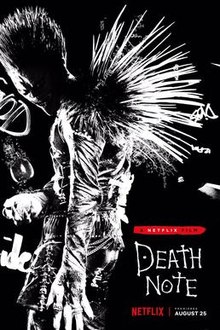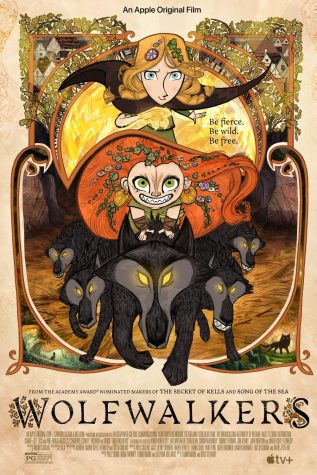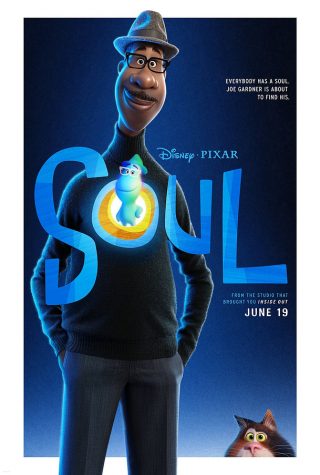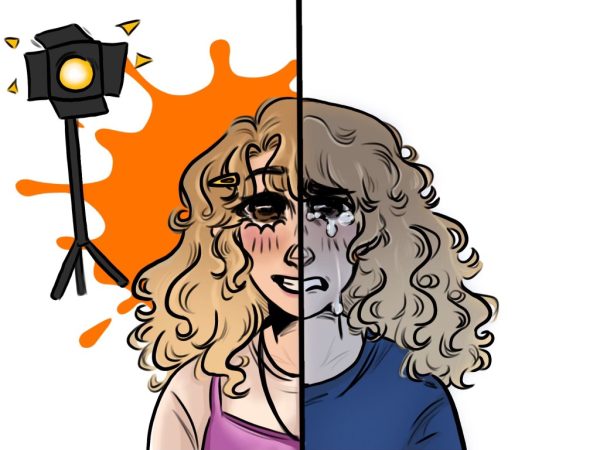Stop comparing Death Note film with anime, they both kill

photo by Netflix
Death Note stars Nat Wolff, Lakeith Stanfield, Margaret Qualley and Willem Dafoe. It is currently available on Netflix.
One of my biggest pet peeves about film audiences is that they have a hard time understanding the term “adaptation.” This is especially true with adaptations of anime.
In the past, Dragon Ball Evolution, Speed Racer and this year’s Ghost in the Shell all received scathing comments on how they deviate from source material. Now joining this club is Death Note, a Netflix original film, released on Aug. 25, adapted from the manga and anime of the same name.
In the story, Light Turner discovers a book called a Death Note, a book that allows its user to kill people simply by writing a name down and picturing their face in their mind. However, many fans of the anime have been ranting online about the “inadequacies” of this film, and the hate doesn’t make sense.
The most common and wildly stated criticisms of the film are about the performance of Nat Wolff and, subsequently, the character of Light Turner. Contrary to popular consensus, they’re both quite intriguing. Granted, Wolff didn’t start the movie very well, his “panicked scream” in detention when he first met Ryuk (Willem Dafoe) being particularly cringe-worthy, but once the film began to pick up, he began to look more convincing. In other words, he managed a serviceable performance when a serviceable performance was required. Plus, the movie did a better job at balancing Light’s setup and execution than the anime did.
In the anime, Light (voiced by Brad Swaile) starts using the Death Note simply out of sheer curiosity, while in the film, Light (Nat Wolff) first uses it in effort to cope his mother’s murder. Both had established opinions about how justice wasn’t being served in the world, hence their motivation to take on the pseudonym “Kira” in order to rid the world of criminals, but the film gave these views a more personal touch, thereby making Light more sympathetic and understandable.
Another common complaint is Light’s decision to show the Death Note to Mia Sutton (Margaret Qualley), who was at the time a practical stranger. In fact, I’ve seen many comments on how supporting characters were portrayed “wrong.” One thing critics fail to realize however, is that the portrayals of these two characters, and this can apply to Light as well, differ due to the stages of life we find these characters in. In the anime, Light, L (Alessandro Juliani), and Misa Anamne (Shannon Chan-Kent), Mia’s counterpart, are young adults, making them more mature, experienced and level-headed. In the film, however, the trio high school-aged, and the audience can see this. They are certainly younger than portrayed in the anime, and are more susceptible to teenage tendencies, like acting out or doing anything to impress a crush, something Light falls victim too. These instances provide flaws in Light and L (Lakeith Stanfield) as people, which make them more human.
Additionally, Mia’s character is almost a polar opposite to Misa. While Misa’s ditzy and immature behavior grows increasingly annoying throughout the anime, Mia’s encouragement for Light’s continual use of the Death Note in the film introduces an interesting dynamic that only gets better as the film progresses.
The most obvious difference between the two is their runtimes. The anime was 37 22-minute episodes in length, 13 and a half hours of material, while the film was only an hour and 40 minutes, not nearly long enough to capture the beginning of Light’s story, and the first act of the film felt rushed. Director Adam Wingard hopes to make a sequel or two, which could open more opportunities to adapt storylines from the anime and continue the cat and mouse game between L and Light.
This isn’t to say that the anime is subpar by any means. The art style is stunning, the story is gripping, the character interactions are amazingly well-written and it kept me hooked from the very beginning. This story and its characters are now being adapted, changed, to serve to tell someone else’s story. It’s like playing a game of telephone; some details will get through, but others end up being scrambled and changed.
The film Death Note is not going to be exactly like the anime, nor should it. The story is taking place in America now, and involves emotionally charged/motivated teenagers simply trying to make the world a better place. Changes needed to be made in order to suit the film’s run time as well as its target audience, and they worked.
So, with this mind, Death Note is an entertaining romp into the minds of three unique teenagers as their lives are changed due to this magical, and deadly, book. If you’re a fan of the anime, I’d still encourage you to watch this film, just do so with an open mind.
And if you haven’t seen the anime, watch the film first. Whether it’s made in Japan or America, Death Note kills.
Your donation will support the student journalists of Hagerty High School. Your contribution helps us publish six issues of the BluePrint and cover our annual website hosting costs. Thank you so much!






![Its The Little Things: [CENSORED]](https://hhsblueprint.com/wp-content/uploads/2024/04/IMG_4644-600x384.jpeg)




